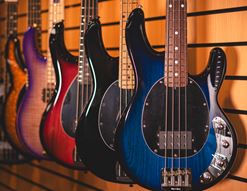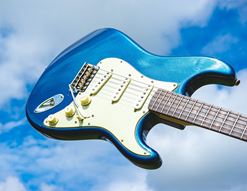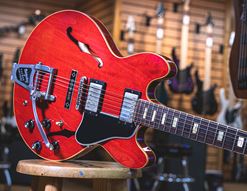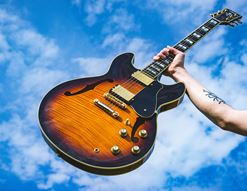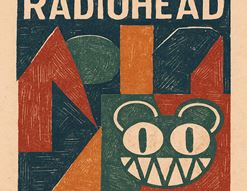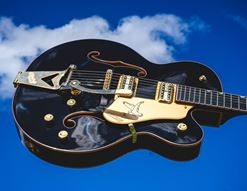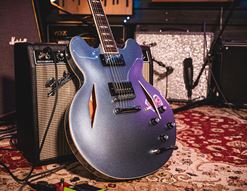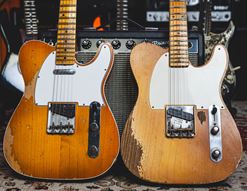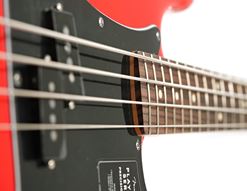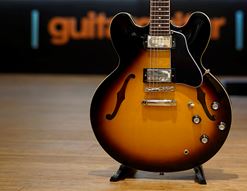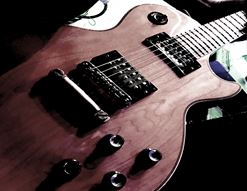Ibanez have ‘previous’ when it comes to extended range guitars. As you’ll find out in today’s blog, they invented a particular idea of an extended range guitar. I’m not talking about baritone guitars today - which I’d say are very much extended range guitars - but instruments that offer both the normal set of notes and open pitches - EADGBE - but then also offer more.
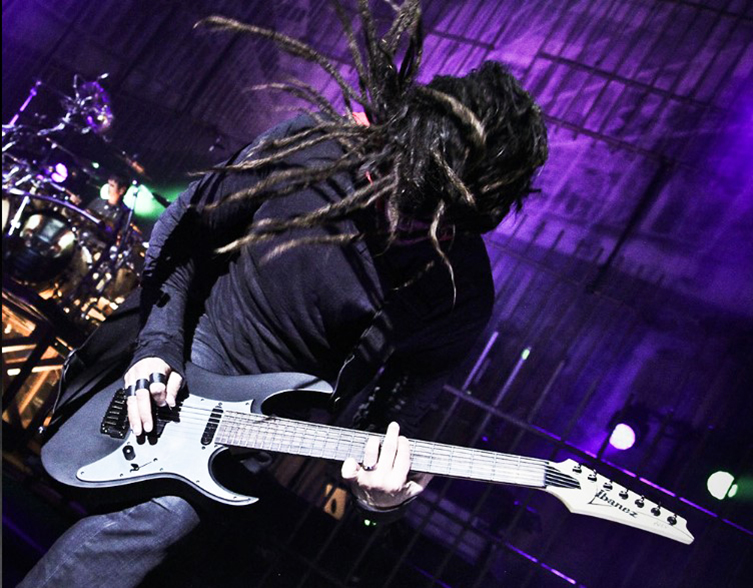
(Photo: Sebastien Paquet/Ibanez)
I’m talking about the 7 string, 8 string and even 9 string guitars that Ibanez guitars produce. I’m talking about longer scale lengths for sure - including multiscale - but in the context of models that aren’t old school baritones (six strings tuned to B standard over a longer than usual neck) like you’d hear in old Duane Eddy songs.
Lots of companies offer extended range guitars of course, and we sell a bunch of them at guitarguitar, but this is all about Ibanez today! I’ll take you through the main ranges and models that they make, starting with one particularly famous example…
Contents
- The Ibanez Universe
- Korn
- Ibanez Extended Range Guitars
- RG
- Iron Label
- AZ Series
- Q Series
- Extended Range: A Legitimate Progression
The Ibanez Universe
It all started with the Universe. The Ibanez Universe, I mean. After the success of the wild and unusual JEM, Ibanez and Steve Vai were on a roll. Vai had a desire to open out his sound and introduce something new for the Whitesnake Slip of the Tongue record, and approached Ibanez about adding a low ‘B’ string to the JEM. By that point, Ibanez had also collaborated with Vai on a less idiosyncratic version of the JEM - known to us all as the RG - so when the Universe landed, it came without the monkey grip.
At the time, it was a revolutionary instrument. 7 string guitars had existed in a very sporadic way before this - Gretsch 7 string hollowbodies existed in the 70s, and Uli Jon Roth had created his Sky guitar - but this was a first in terms of a mass production guitar with an extra low B string.
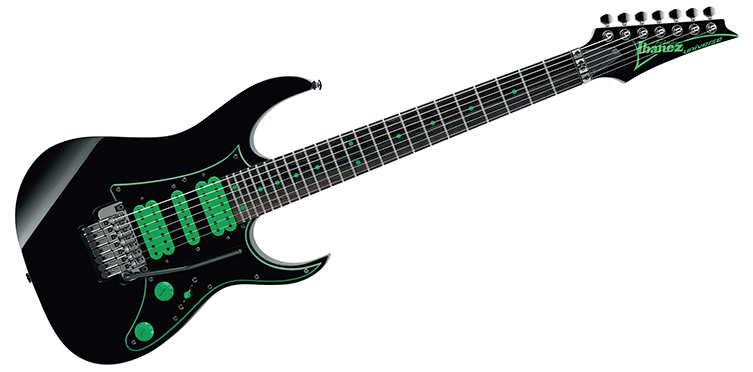
The first Universe was the UV70, a black and lime green masterpiece that appeared in 1990, some three years after the JEM7. It used a standard 25.5” scale length, a set of specially designed DiMarzio pickups and a 7 string version of Ibanez’s Edge tremolo, which was their licensed take on the Floyd Rose. You can buy an awesome reissue of that guitar today via Ibanez's Premium range of guitars, as the Ibanez UV70P.
The Universe was very popular upon release, but after a few years that popularity began to wane, thanks to Grunge and Britpop. It took one particular band to put a new spin on the sound and pretty much change heavy music history.
Korn
It’s hard to overestimate how influential Korn were in the mid-to-late 90s. They remain a huge band of course, but back then, their sound came out of nowhere and changed the game. Slow, unearthly heavy and bearing an obvious hip-hop influence in the rhythms, Korn single handedly invented the Nu-Metal genre. Their two guitarists, Brian ‘Head’ Welch and James ‘Munky’ Shaffer, achieved an entirely fresh palette of unorthodox sounds from their Ibanez Universe guitars.
All of a sudden, 7 string guitars were an essential proposition.
Now, this isn’t a history of the 7-string guitar, it’s a guide to Ibanez’s extended range guitars, so I won’t go too far into the continued backstory. Suffice to say, Ibanez were front and centre during this era of expansion, and have remained that way since.
I should add that Meshuggah - the Swedish technical metal inventors of ‘Djent’ music - are probably as influential on today’s extended range guitarists as Korn or anybody else. They weren’t massively popular at the time (they’ve been together since the late 80s and were innovating with 7 strings back in 1995) but they’ve slowly become the benchmark for progressive technical metal. Every heavy band you like? Their favourite band is Meshuggah. Both of their guitarists have signature 8 string guitars, which they settled on after moving from 7-strings right up to 9-strings!
Ibanez Extended Range Guitars
On to the guitars themselves, then. Ibanez offer 7 string, 8 string and 9 string guitars in a number of ranges. Here is a quick guide to those ranges.
RG
Direct descendants of the JEM, Ibanez RG guitars are a cornerstone of the brand. The lines and contours of the straight-up RG range are largely as they were in the late 80s, which makes sense since they are a classic! 7, 8 and 9 string guitars are available as RGs, but there are further RG sub groups, so here’s a brief rundown:
- RGA: Like an RG but with an arched top and increased carving in the cutaways for a sleeker, more contemporary look.
- RGD: The RGD guitars have a slightly longer scale length and are designed for sitting in lower tunings. Their body contours are different too, and often have exotic timber tops for a dramatic look.
- GRG: GRG is Ibanez’s most affordable lineup of guitars. Kudos to them for not only including 7 string models, but for keeping the full Ibanez name and logo on the headstock (instead of a sub brand) whilst still making sure the build quality is up to scratch.
It’s worth quickly showing the Ibanez RG9PB. Ibanez first made a 9 string over a decade ago, but it’s still a very niche corner of the market. That said, this is an impressive instrument armed with excellent quality hardware (two truss rods!) and full-on active 9-string variants of Fishman’s celebrated Fluence pickups.
This thing is pretty immense, with a 28” scale length neck, a 62mm nut width (6 string guitars are normally 41-42mm, for perspective here) and strings that tune from E to C#! The bottom string is a .090, which is insane! I want one NOW.
Iron Label
The Ibanez Iron Label range was created specifically for the harder styles of music, so it’s no surprise that they feature plenty of extended range guitars.
You’ll find a collection of solid body guitars of all shapes (RG, Xiphos, Iceman and more), all dressed in several shades of black and eschewing all extraneous forms of decoration.
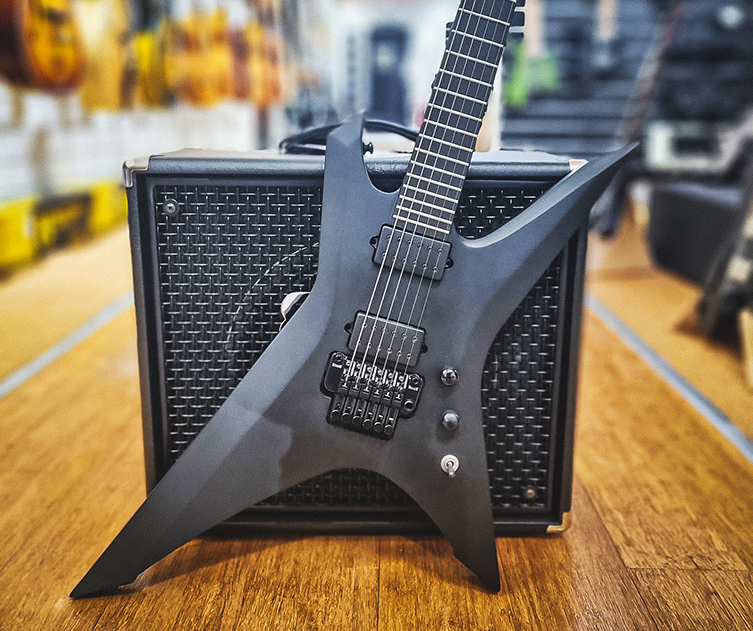
These guitars feature premium pickups from brands like DiMarzio and EMG for the richest, heaviest tones possible. Scale lengths range from standard 25.5” to 27”, with 7 and 8 string guitars appearing in the lineup.
The Iron Label features multiscale action too: the RGMS7 is a multiscale (25.5” - 27”) 7 string with fanned frets and a slanted bridge. The benefit to multiscale guitars is that you gain increased tension on the lower strings (which need it at these low pitches) without sacrificing playability on the lightest strings. For contemporary metal, prog and Djent styles, a multiscale guitar is a very worthwhile solution!
AZ Series
7 string guitars are available from Ibanez’s AZ Series, too. The AZ guitars are less ‘metal’ than many Ibanez models, catering to those players who want a more ‘boutique’ playing experience. The corners are softened somewhat, making these guitars fit into lots of musical situations. The performance, however, is pure Ibanez, with highly spec’d features that often include Gotoh bridges, Seymour Duncan pickups and stainless steel frets.
AZ guitars are available in Prestige & Premium ranges. Have a look at the 7 string AZ24027 from the Prestige range for a genuine alternative that still delivers.
Q Series
Headless guitars are a big thing again, with lots of players enjoying the practicality, portability and also the contrarian stance provided by such guitars. Reading the market, Ibanez have added a headless range to their offerings. The Quest series (shortened to ‘Q’) marries an entirely new body design to their catalogue, sans head and featuring new pickups and bridges. Whilst most of the Q range are 6 string models, 7 string models are available too: check out the Q547 for a good example.
There’s also the QX series, which add slanted frets (not multiscale, just angled for comfort) and a correspondingly slanted bridge. The Ibanez QX527PB brings this all together in one great package, complete with a figured poplar burl top, 24 stainless steel slanted frets and custom hardware.
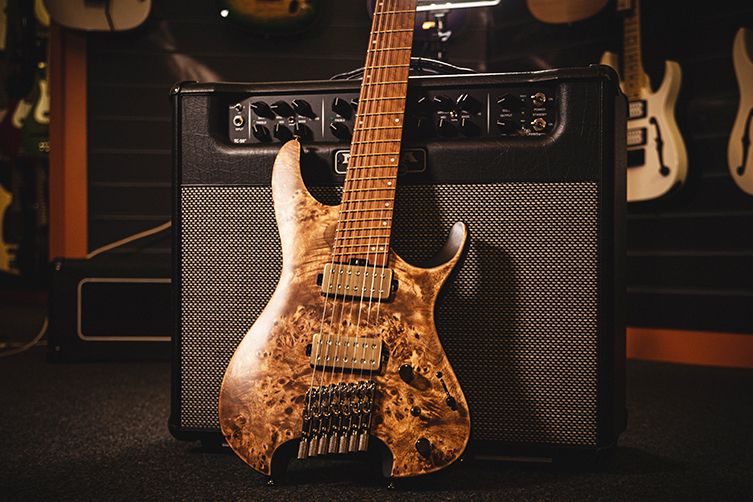
Extended Range: A Legitimate Progression
What began as a wild notion of Steve Vai’s has turned into a whole new language for the guitar. Choosing an extended range guitar opens up new corridors and pathways for your expression as a guitarist, with new notes available to you, and the older notes existing in a different place (or so it seems) on the fingerboard.
Extended range guitars are the sound of now and they are the sound of the future. In the hands of Ibanez - one of the most daring and creative of guitar companies - the future looks bright!

